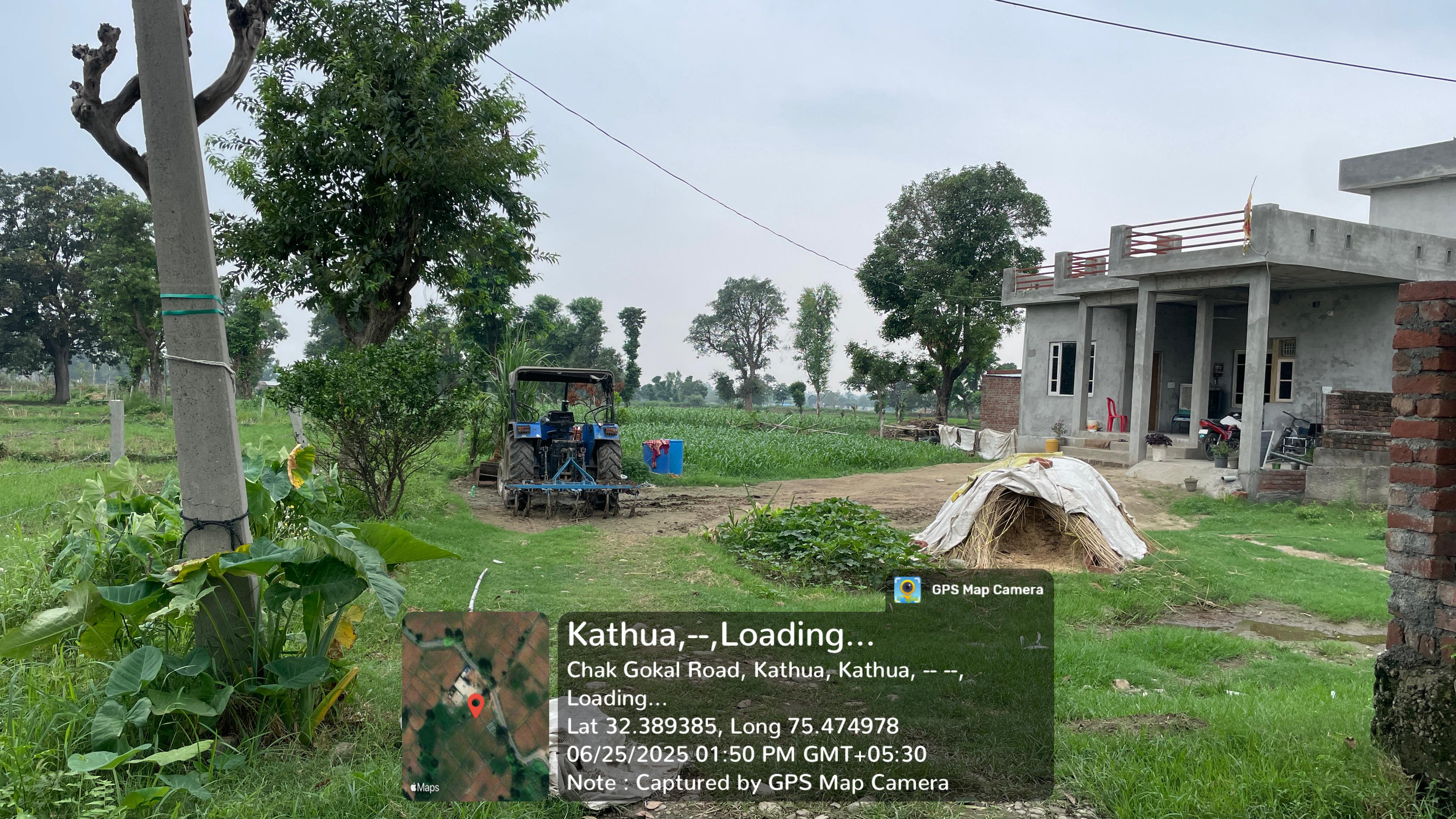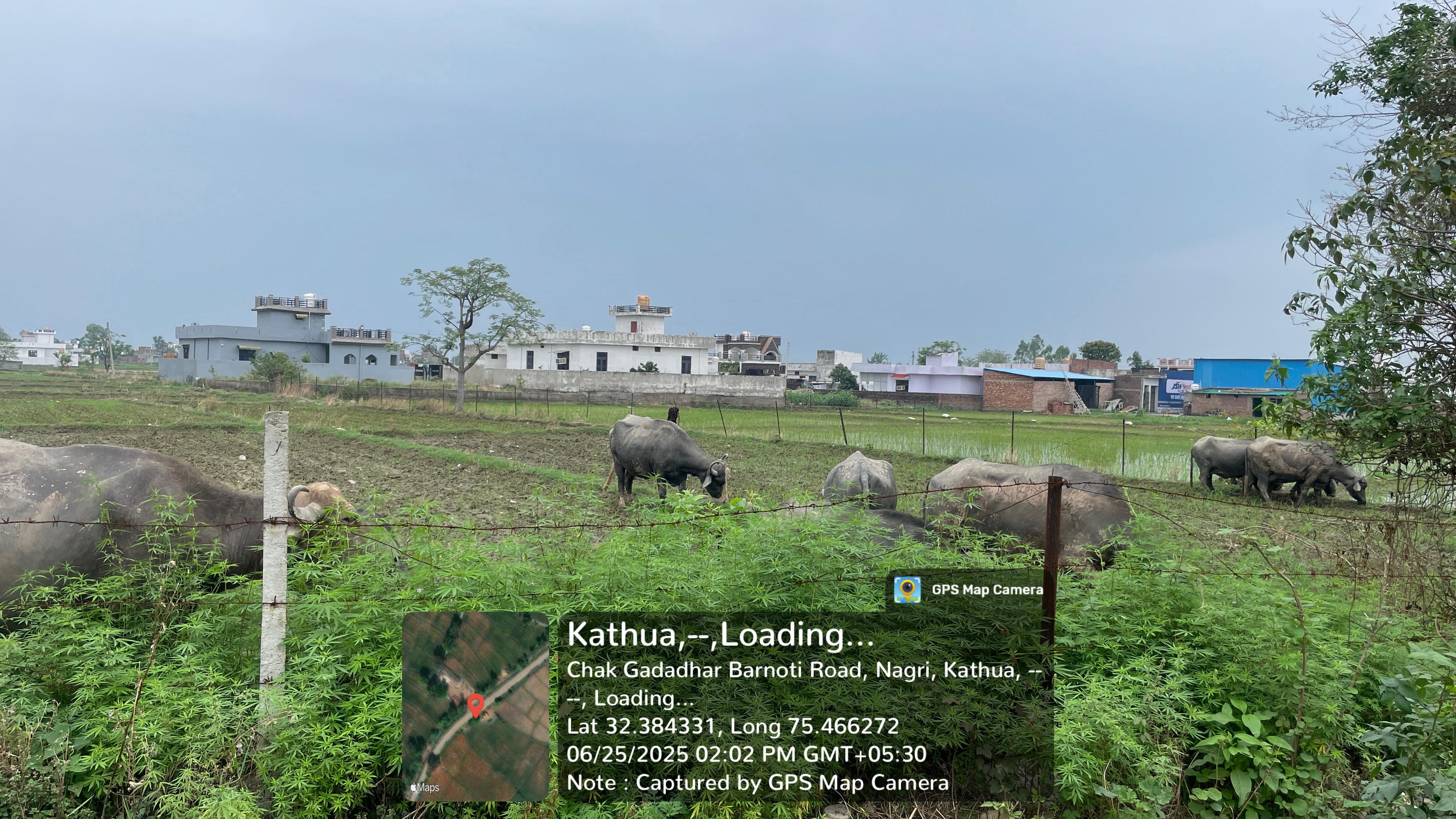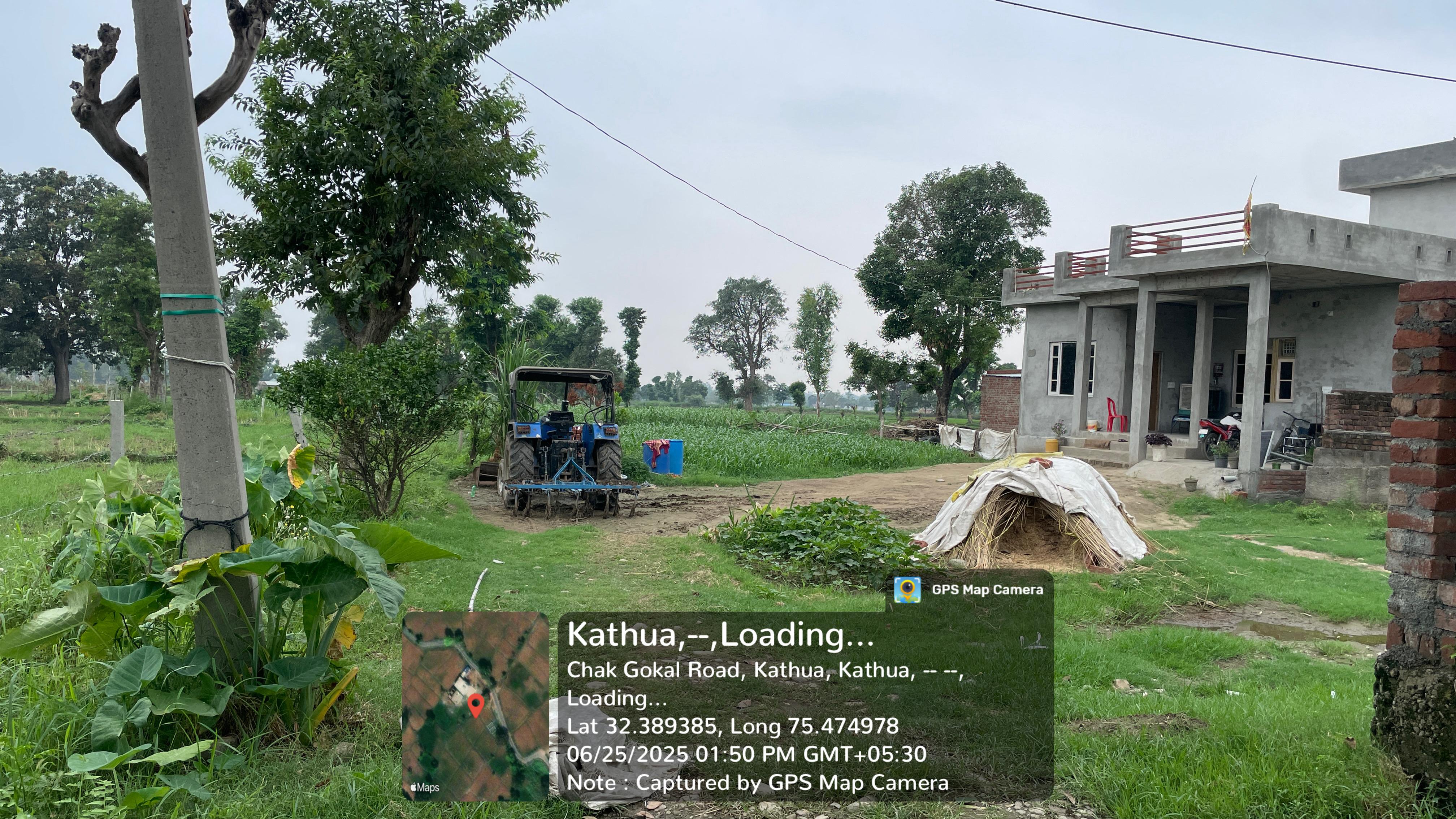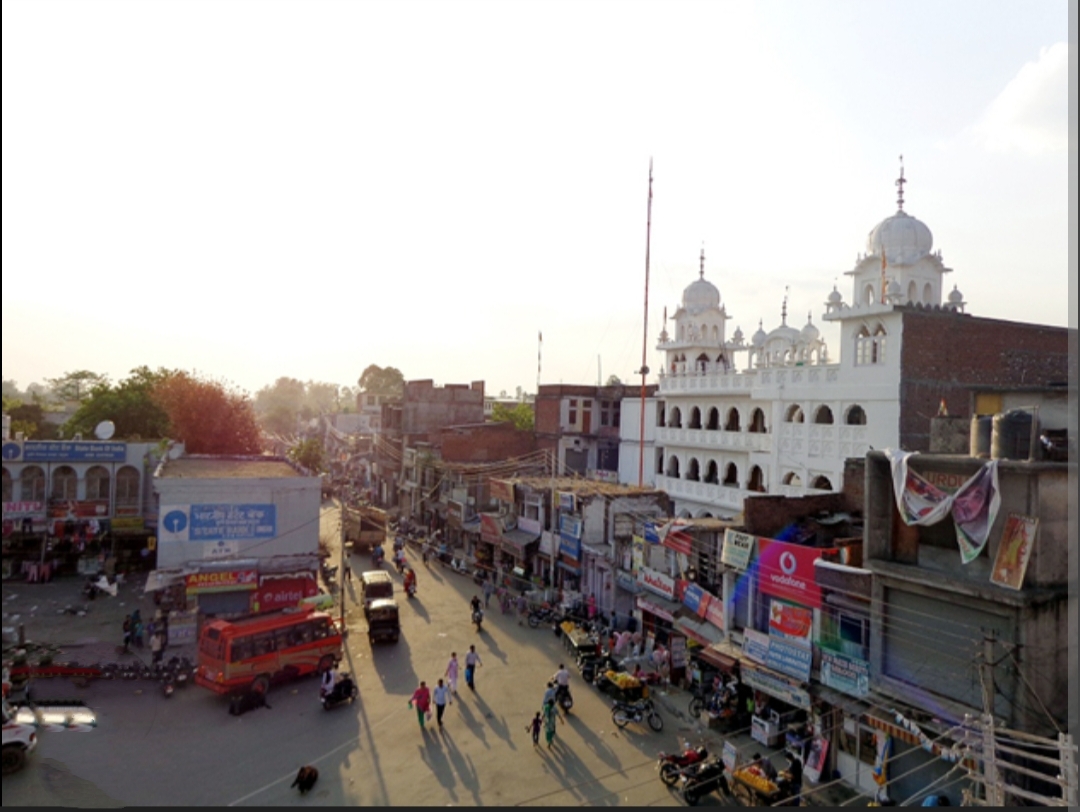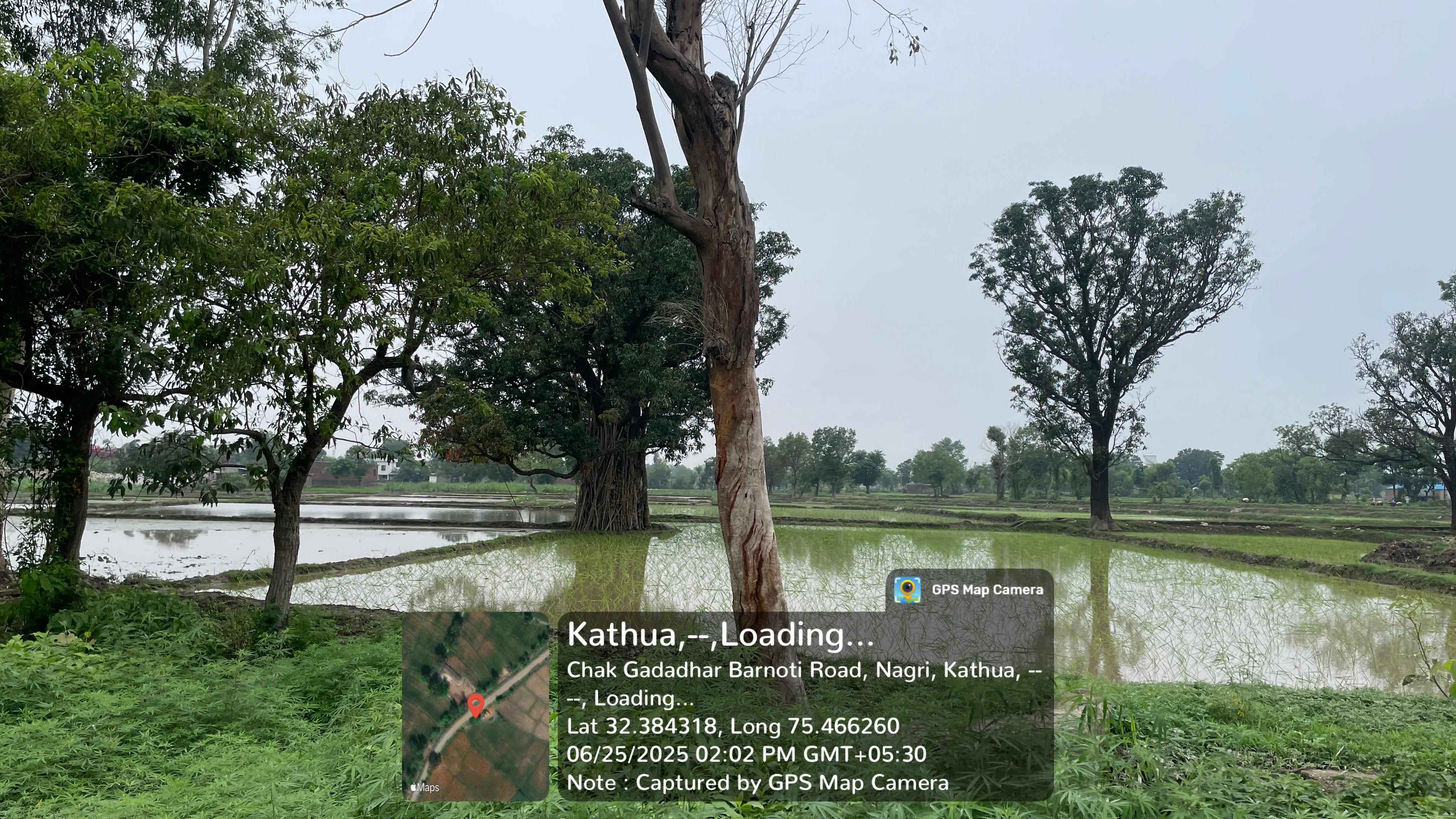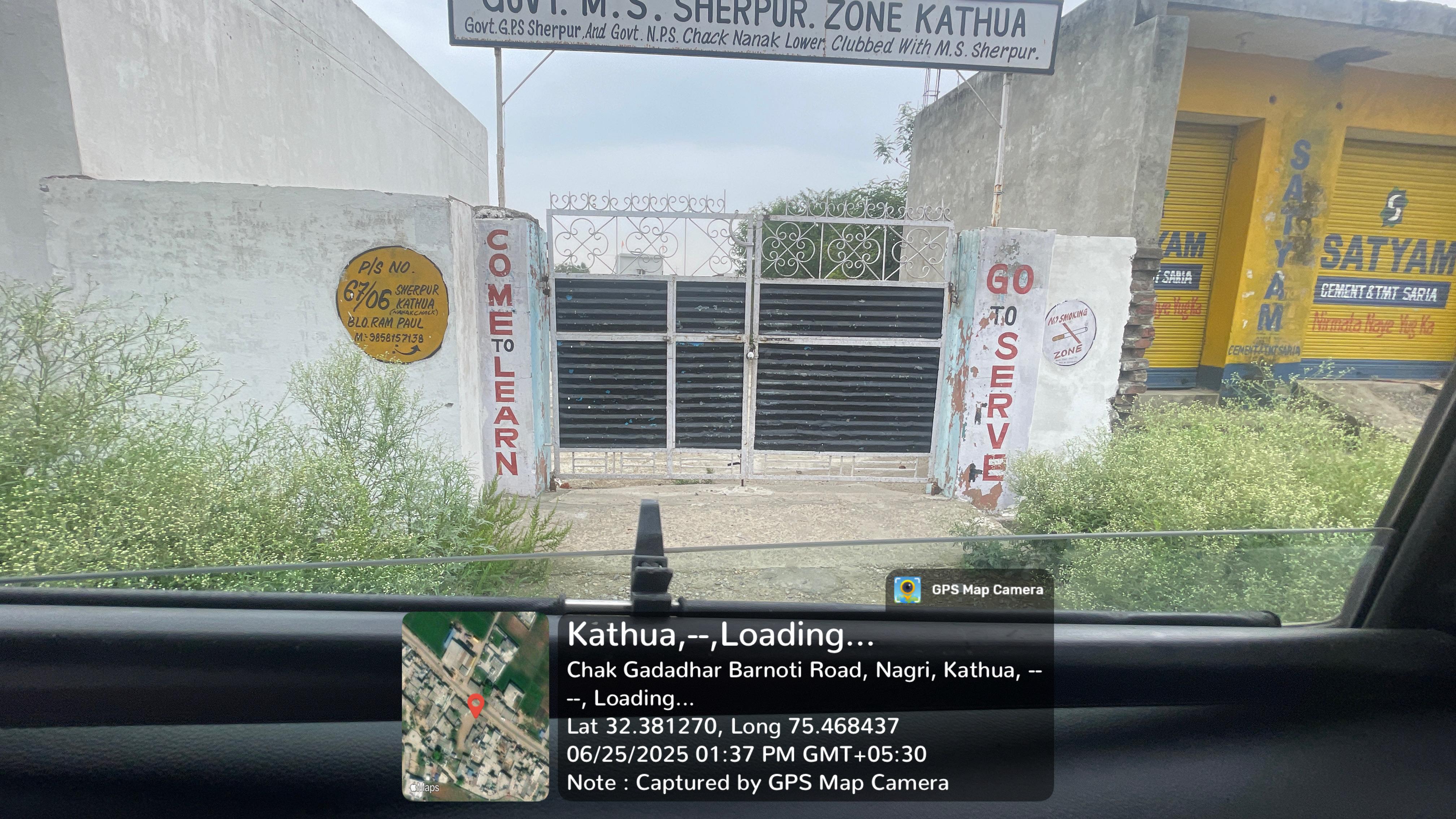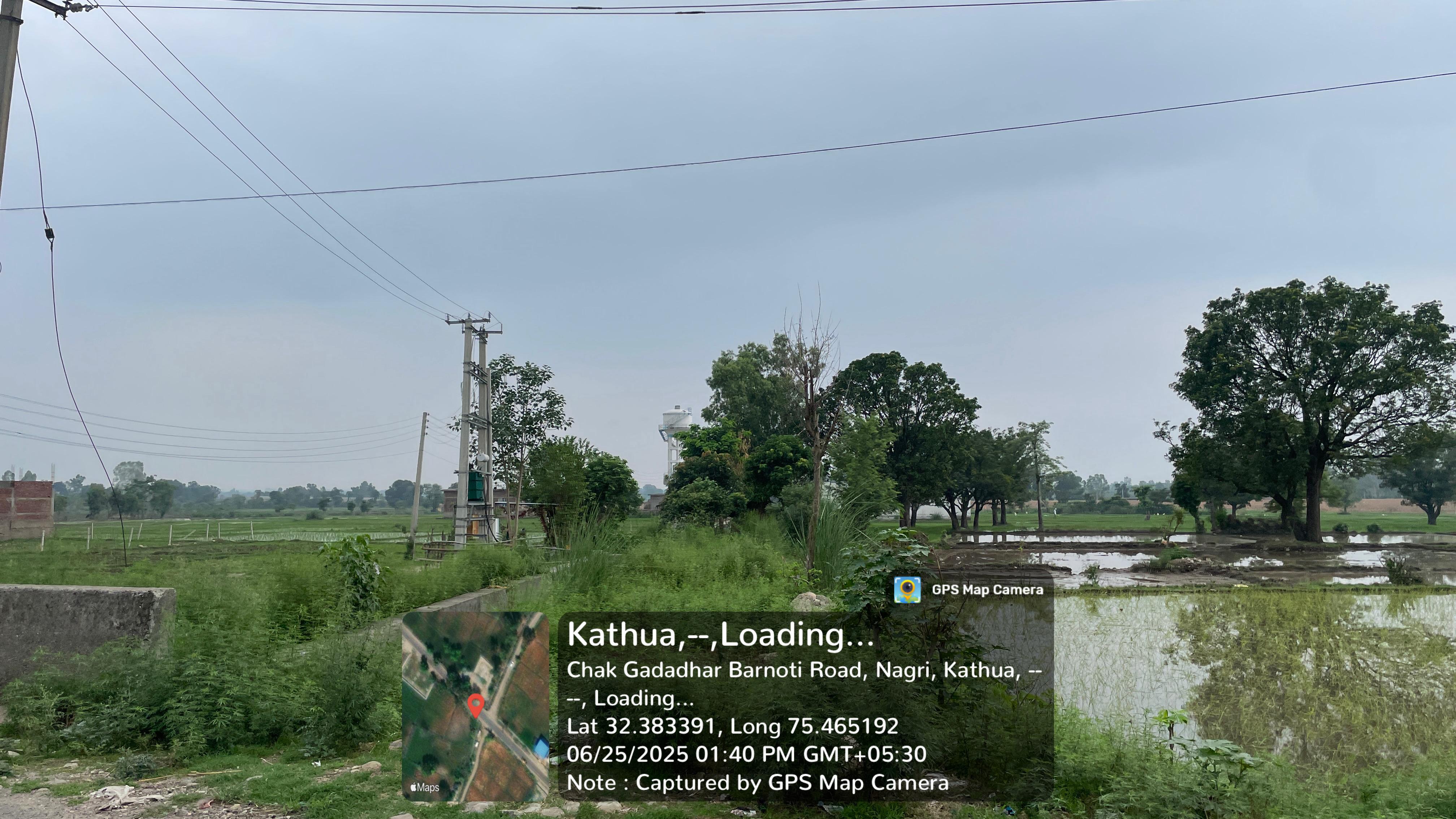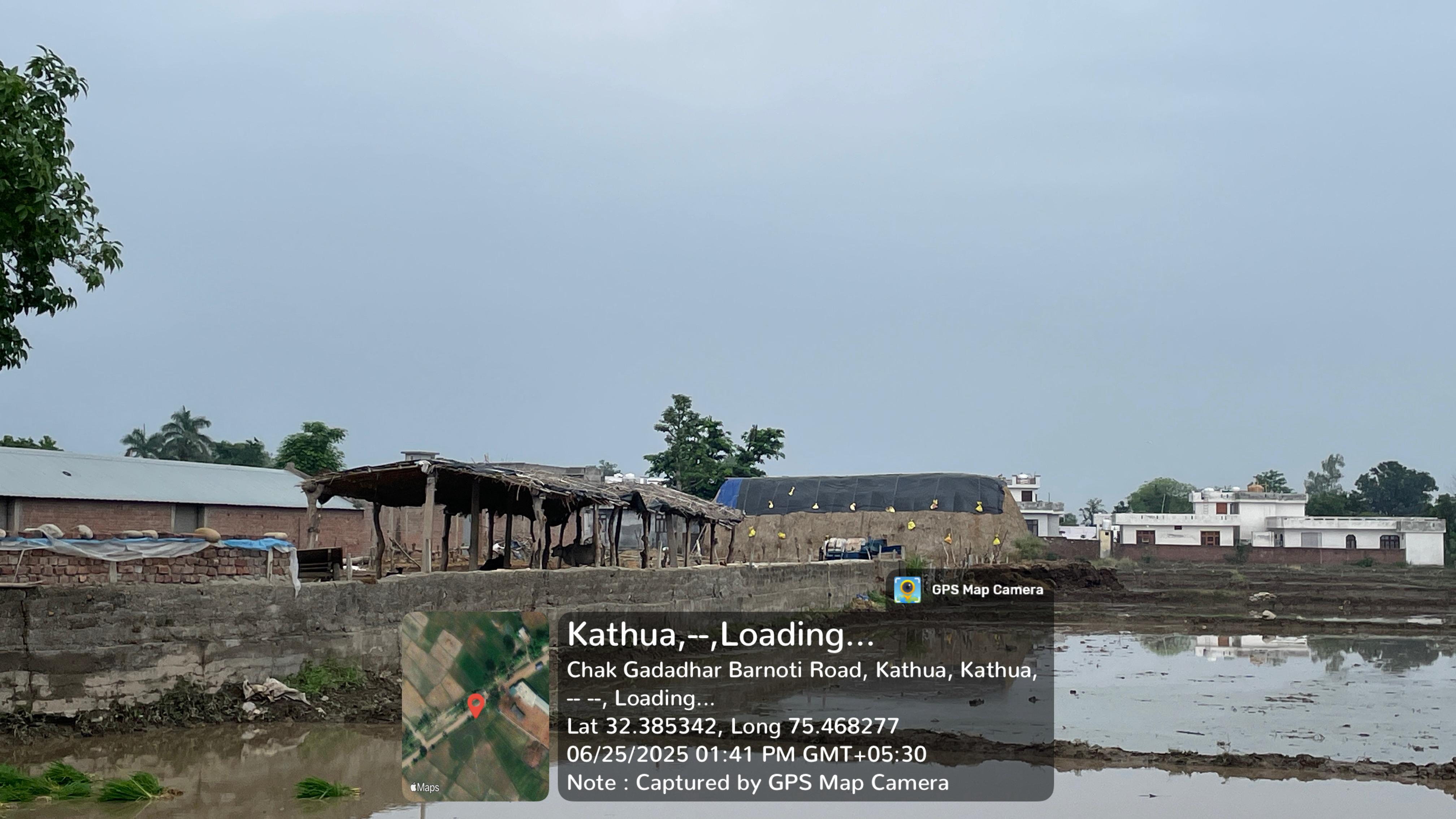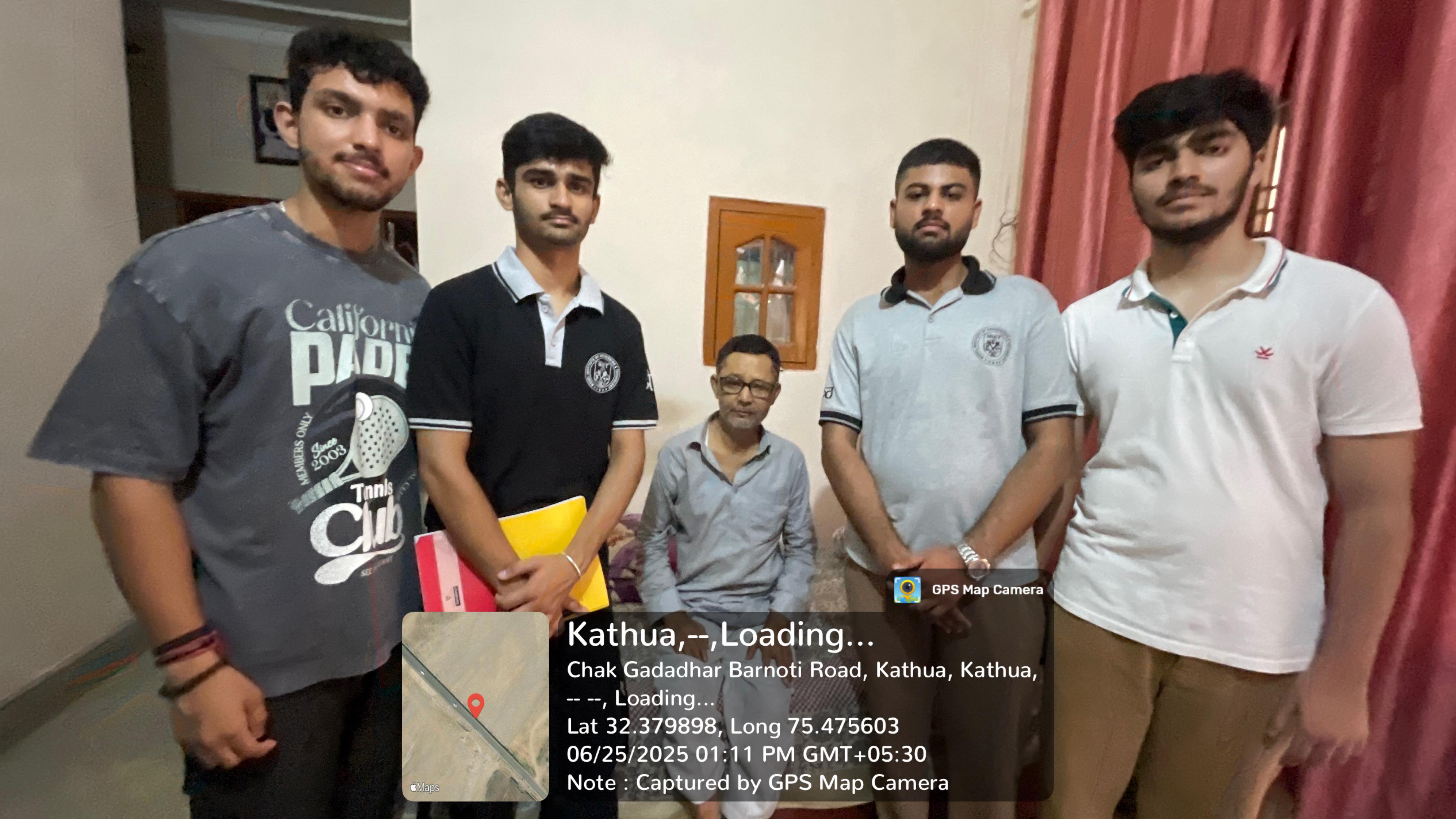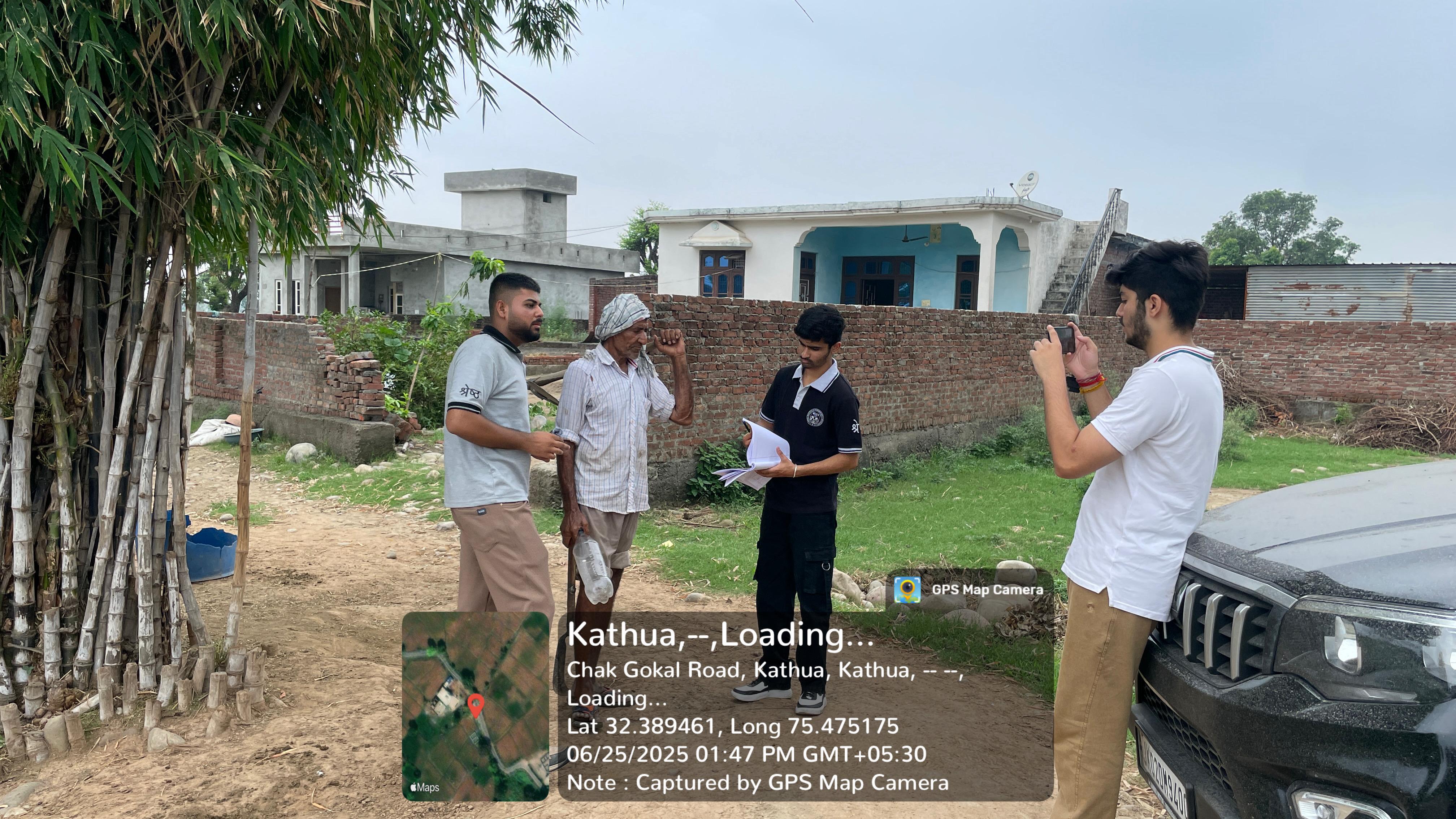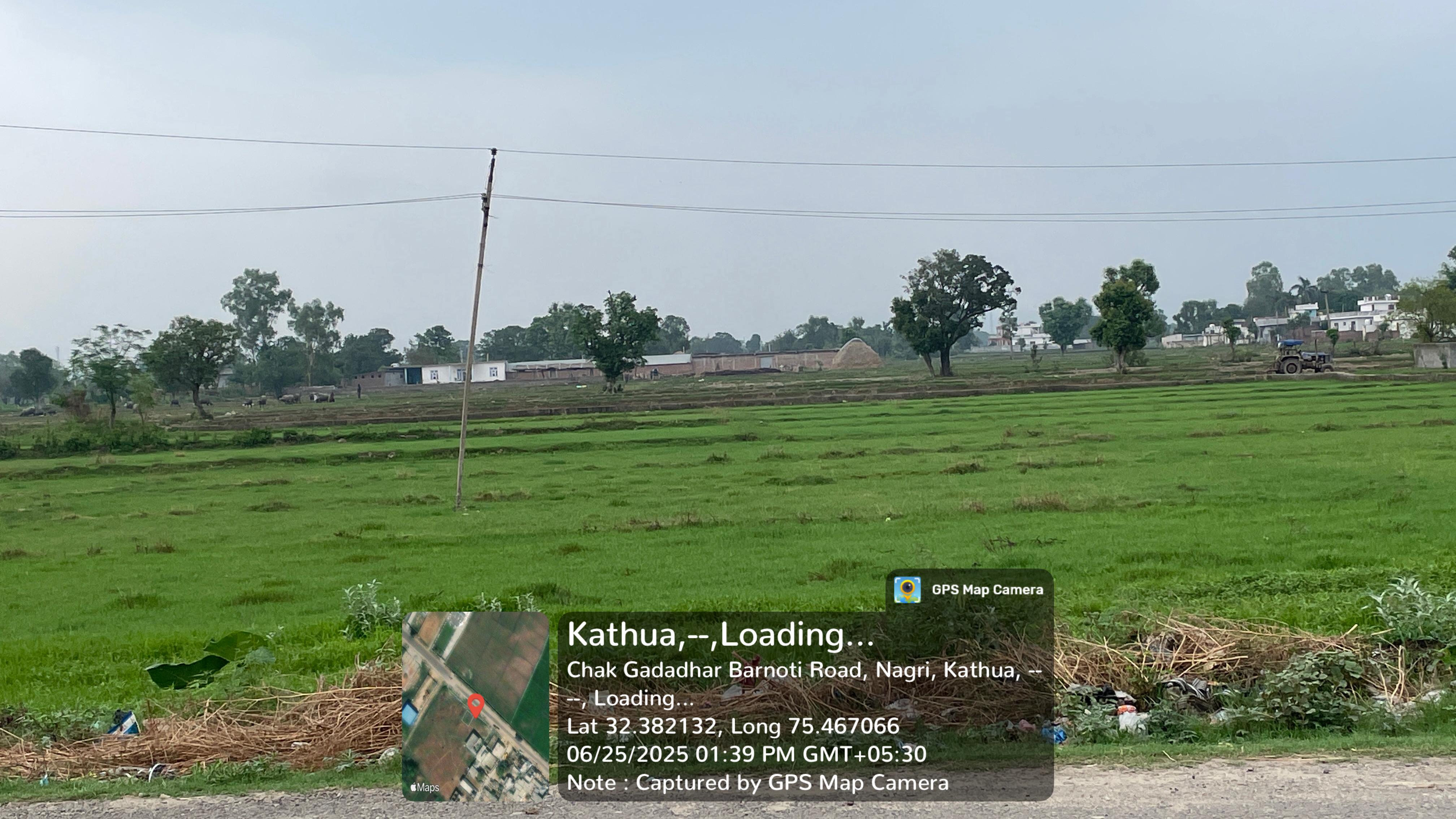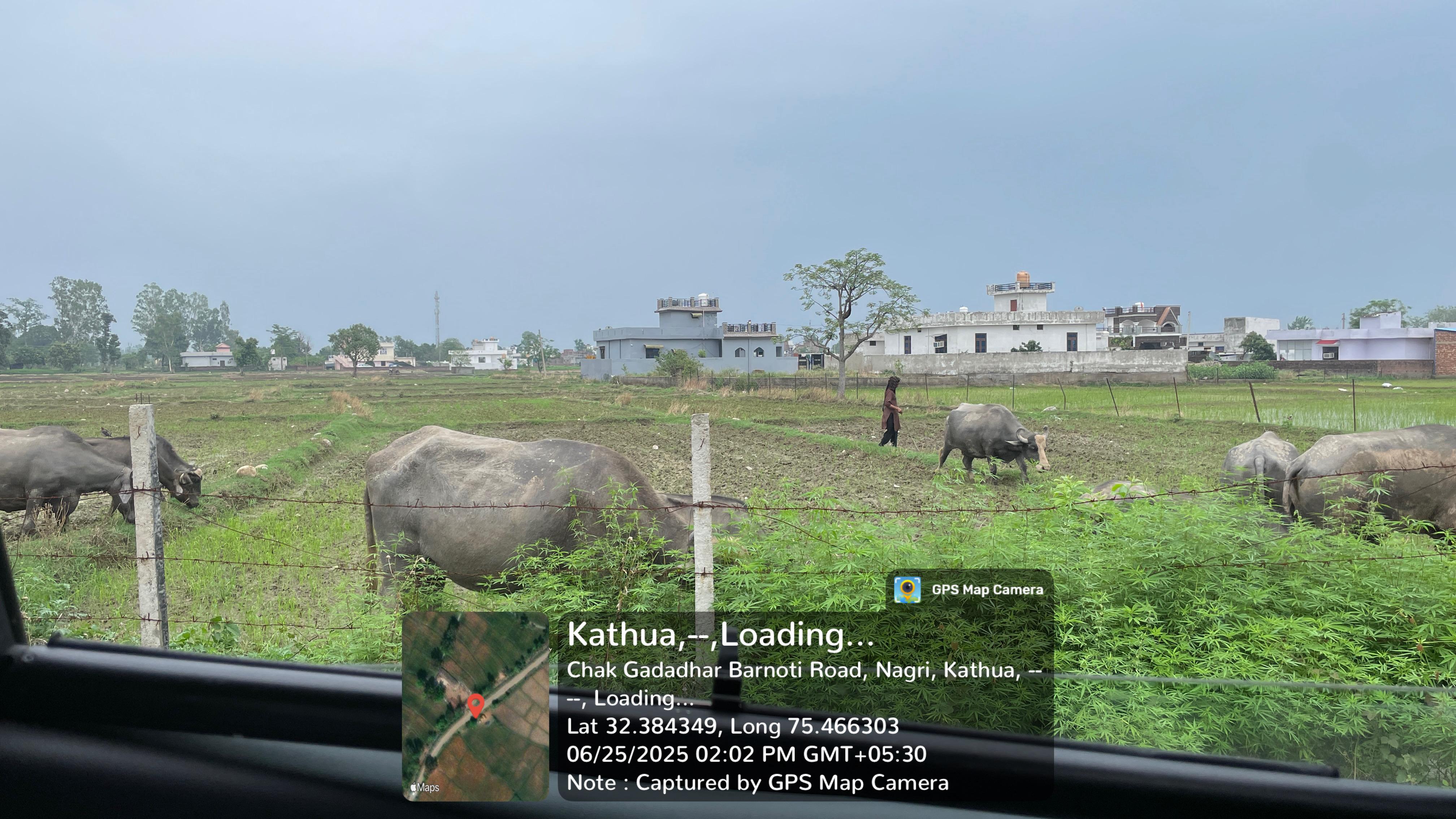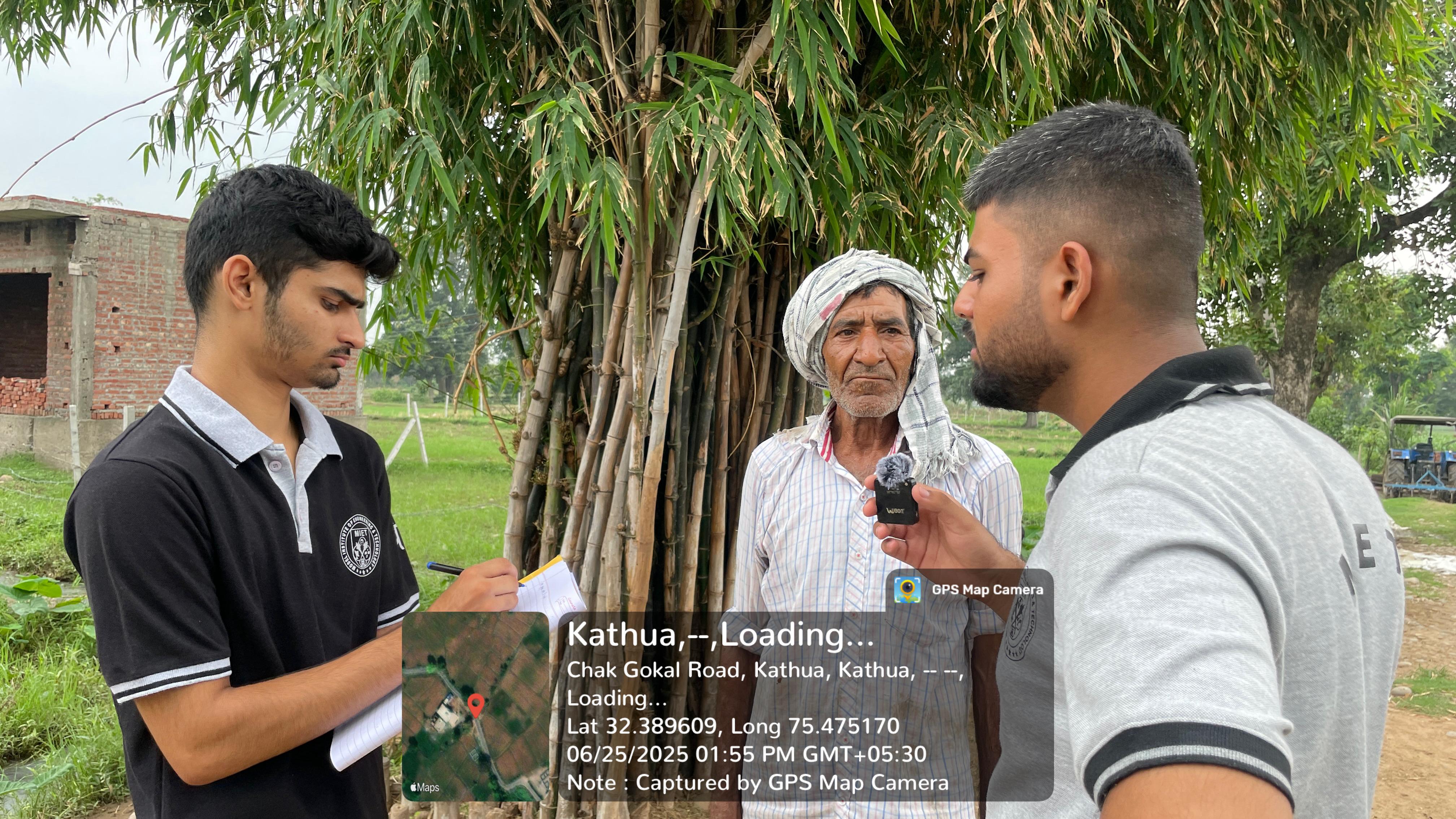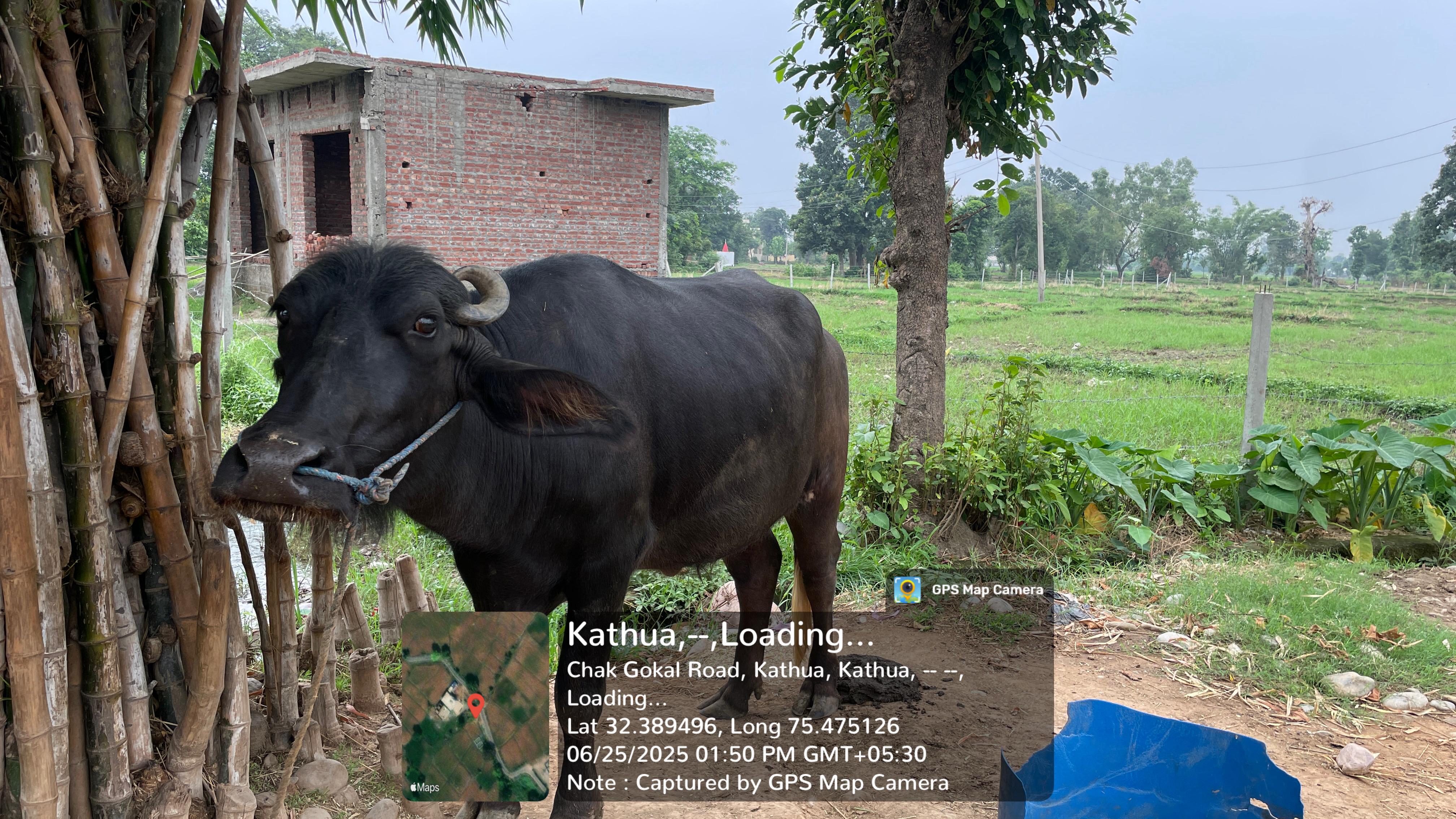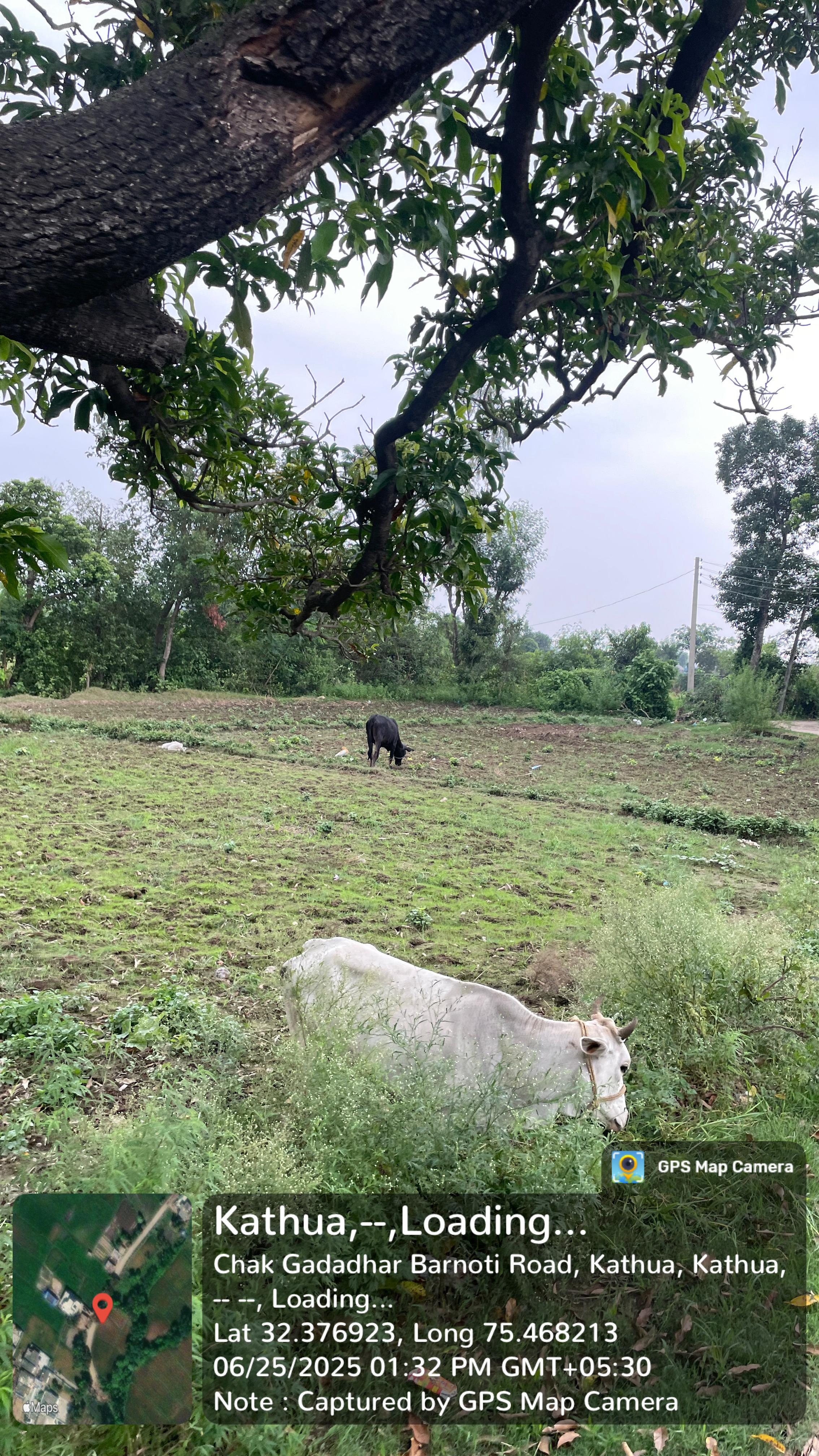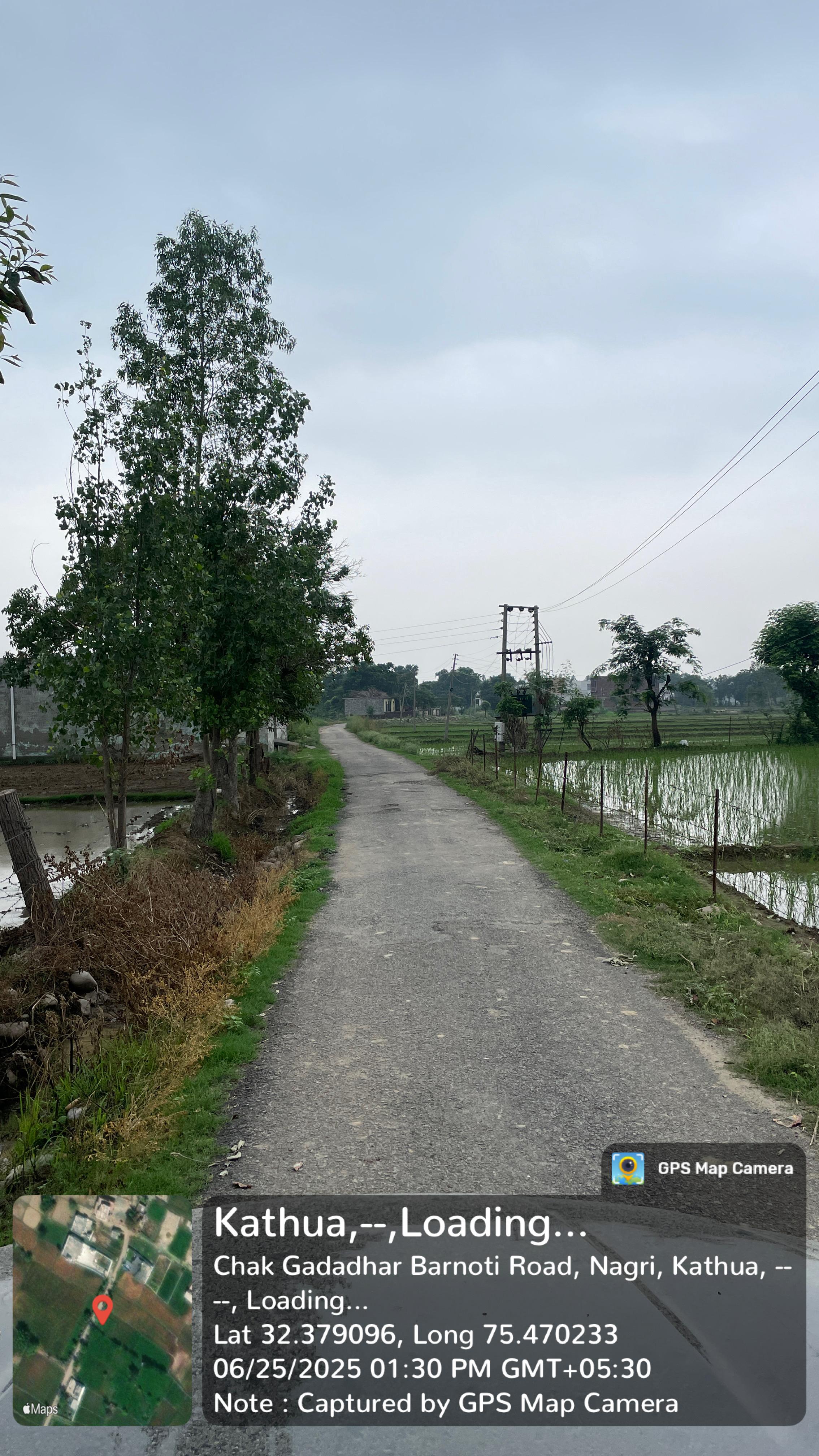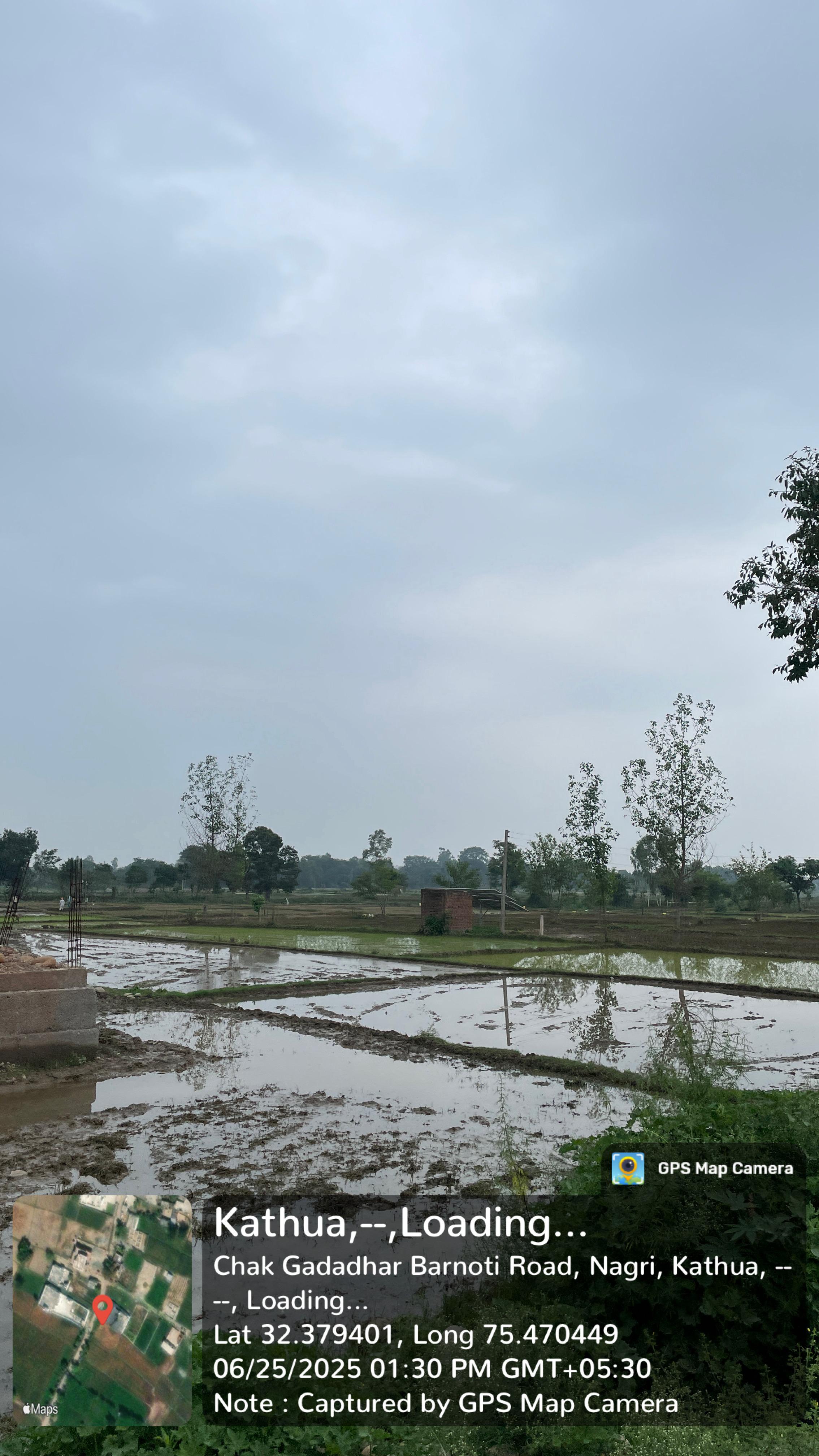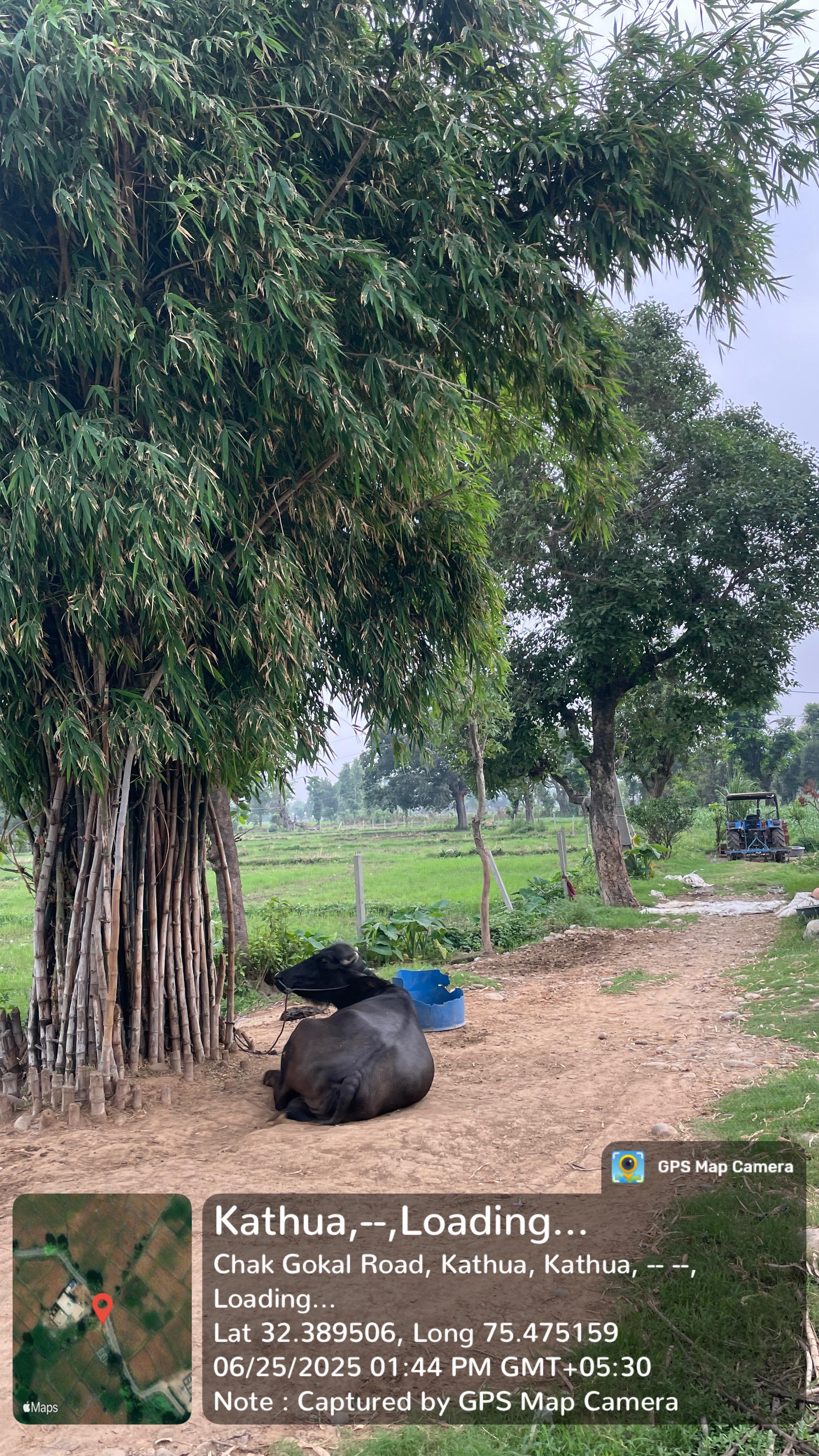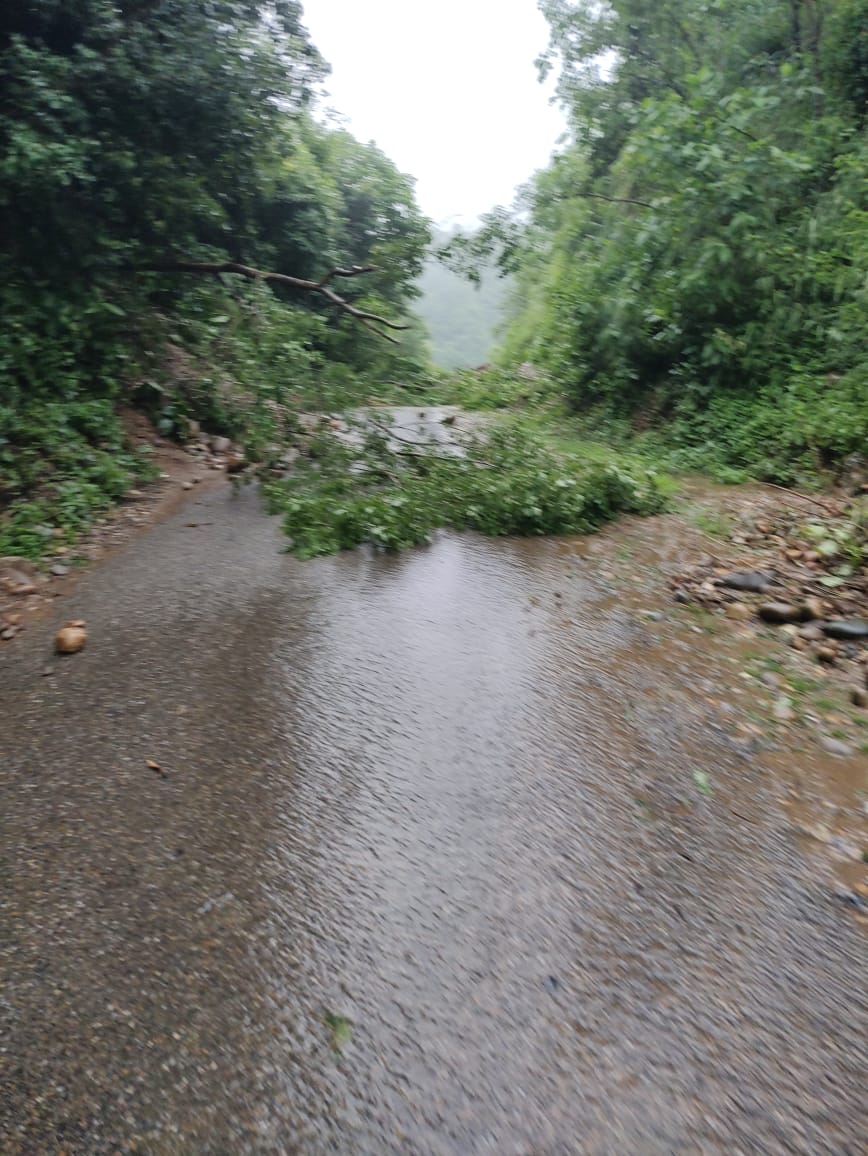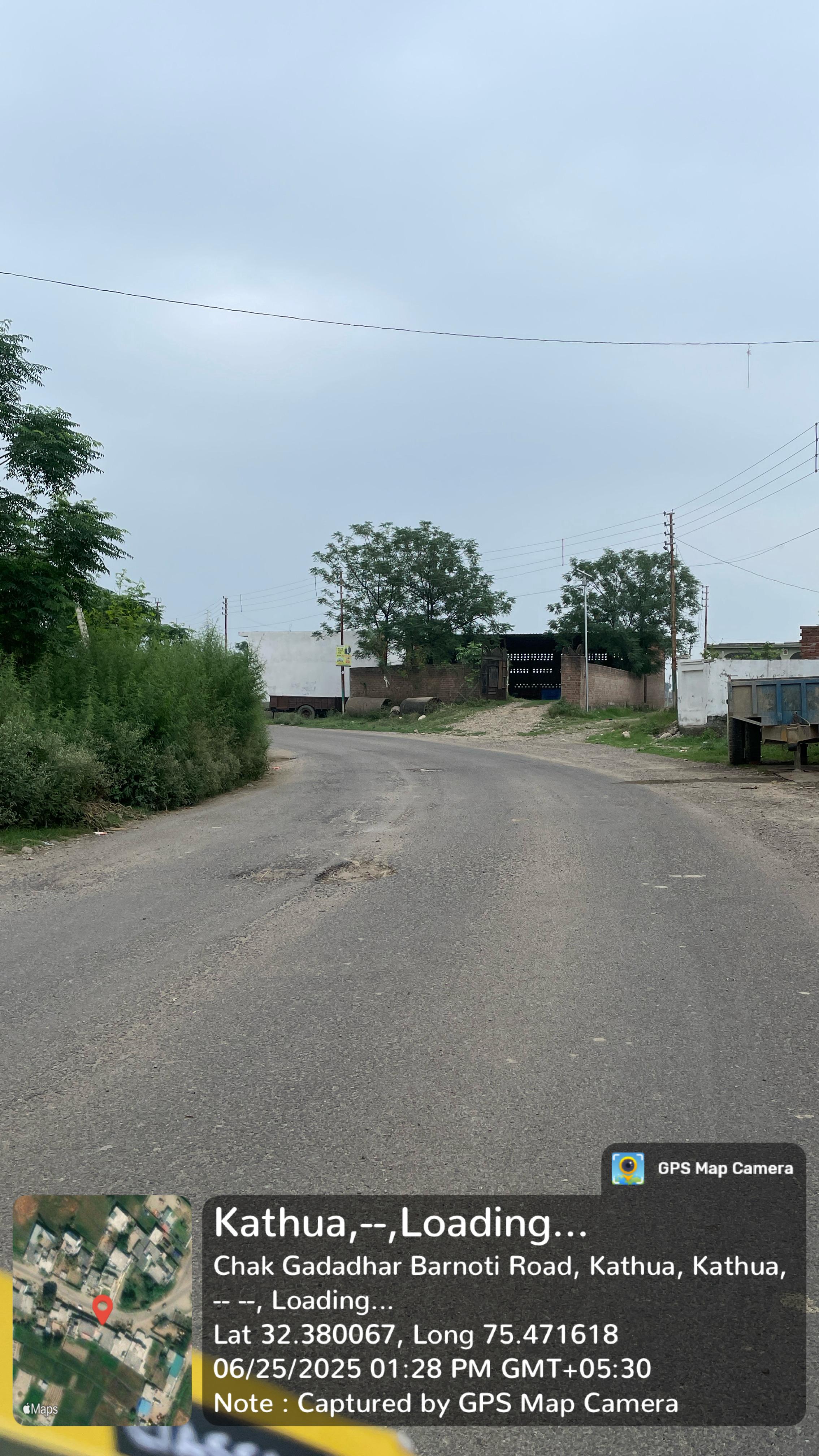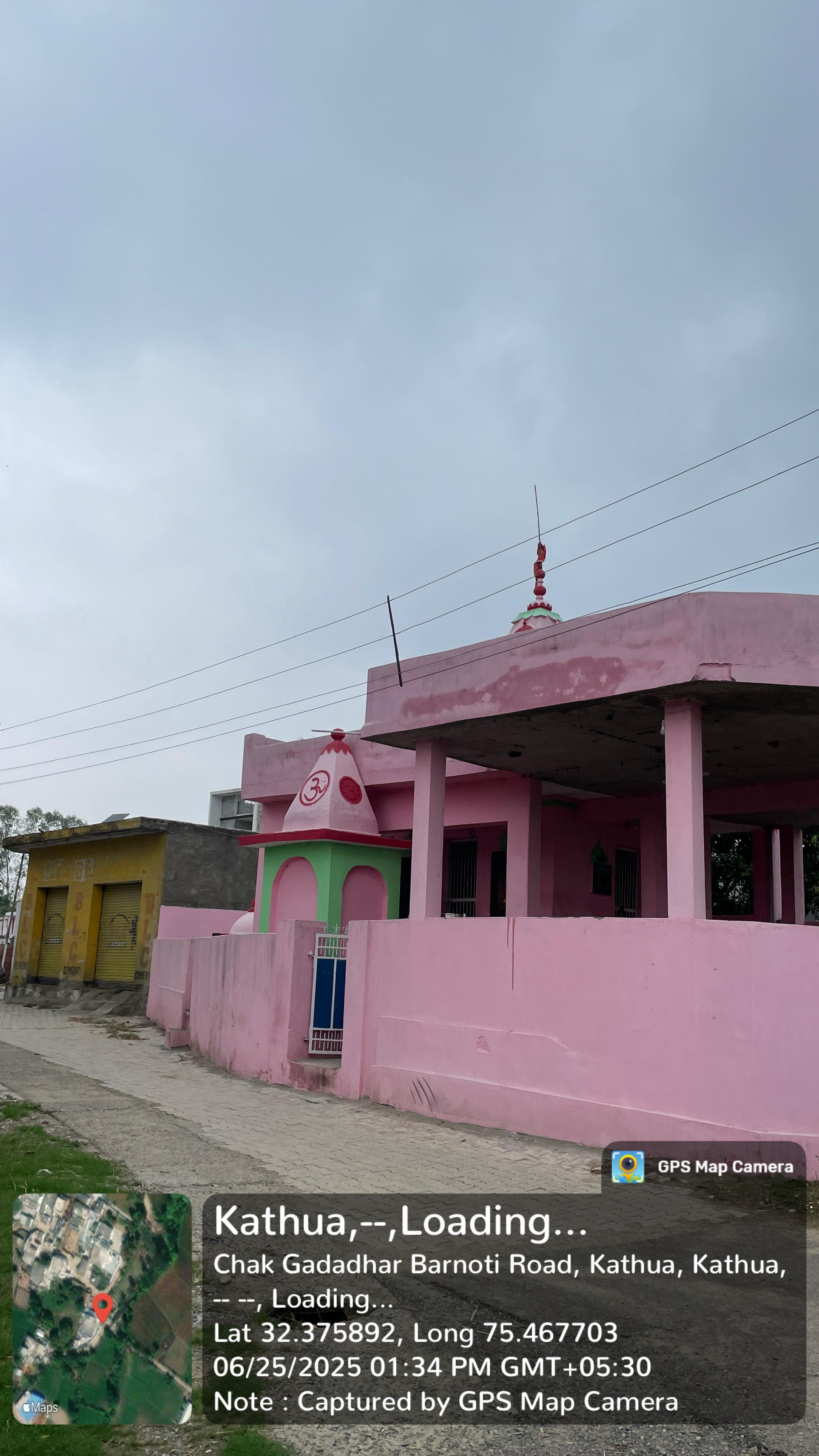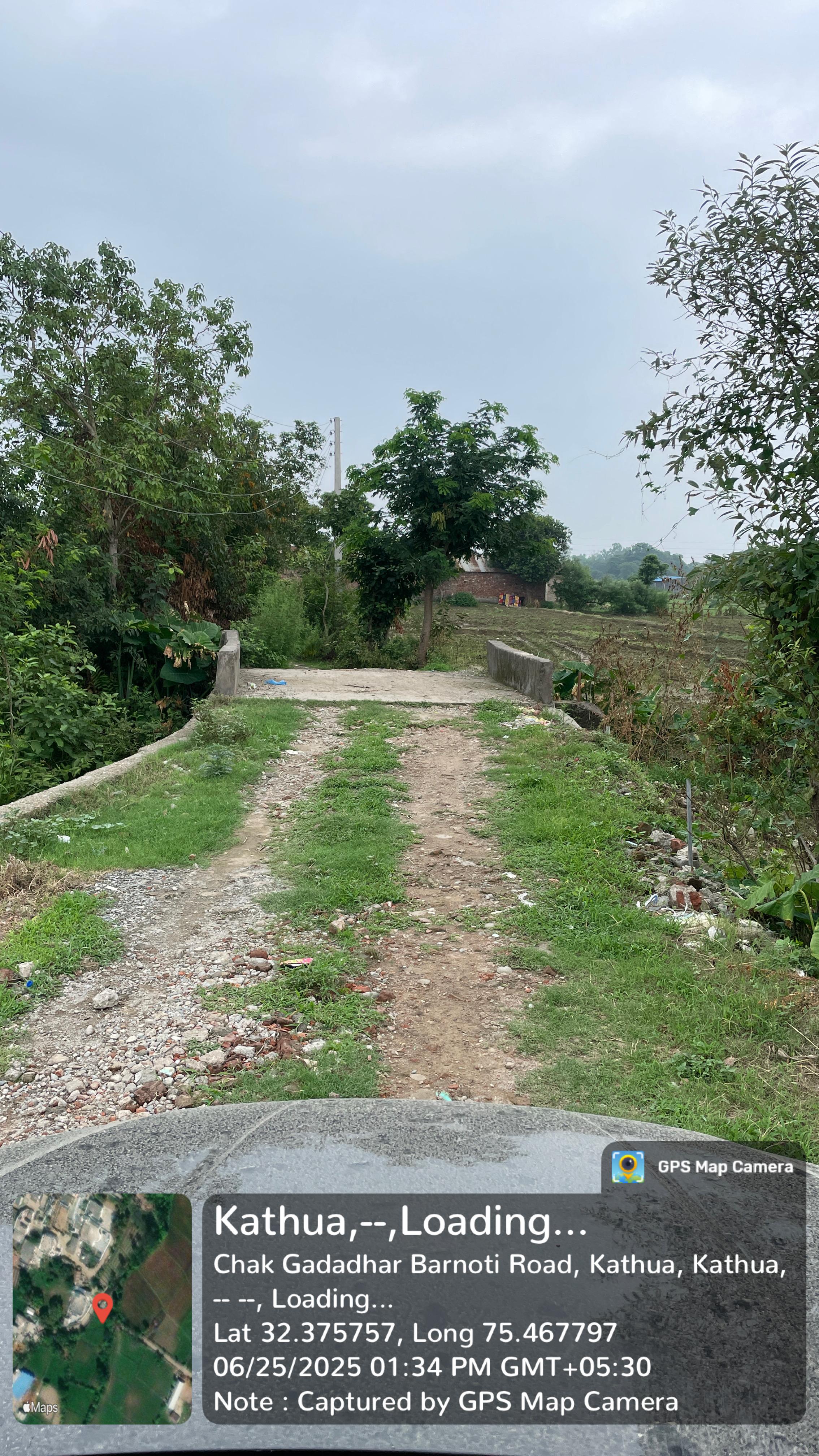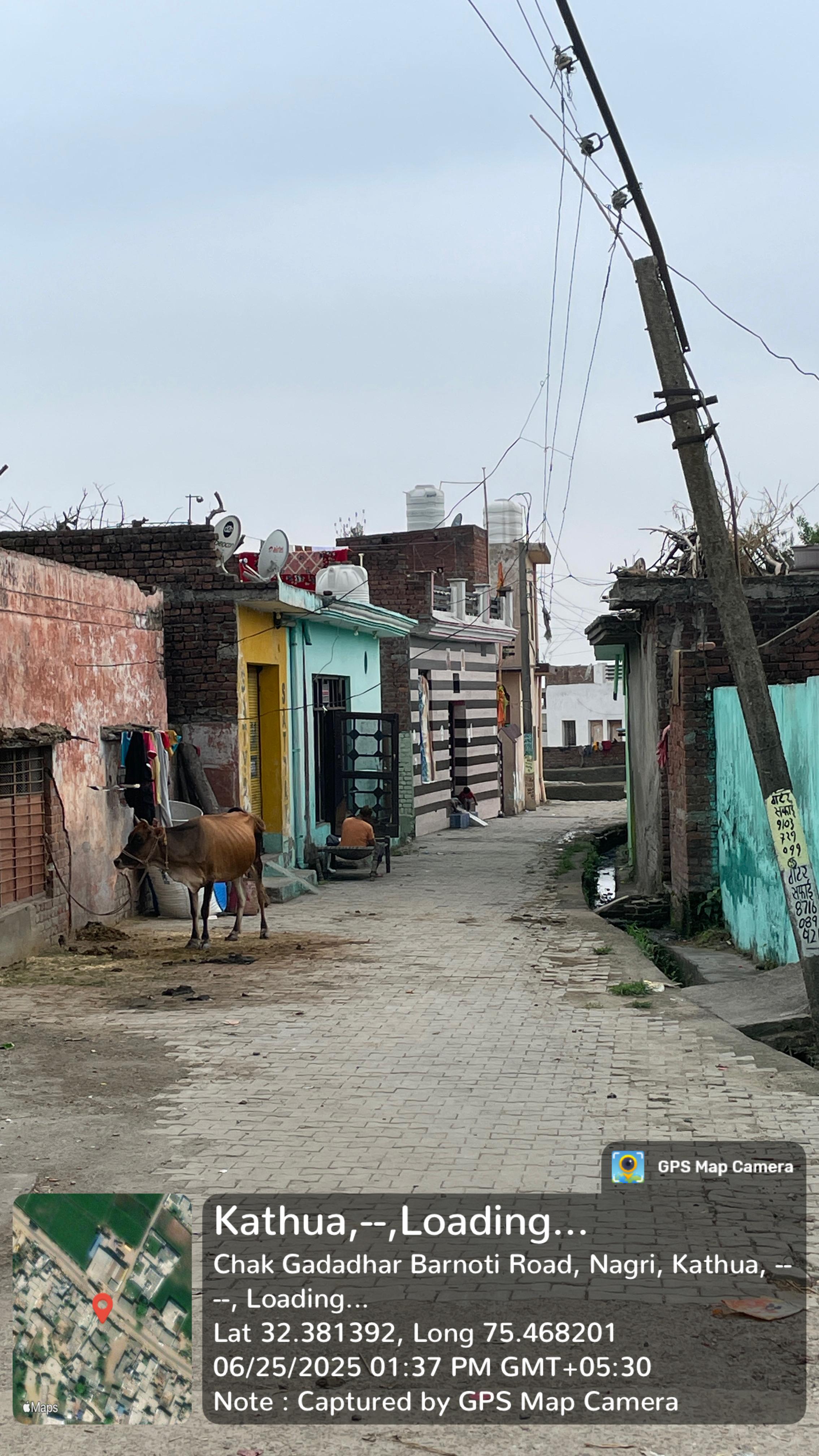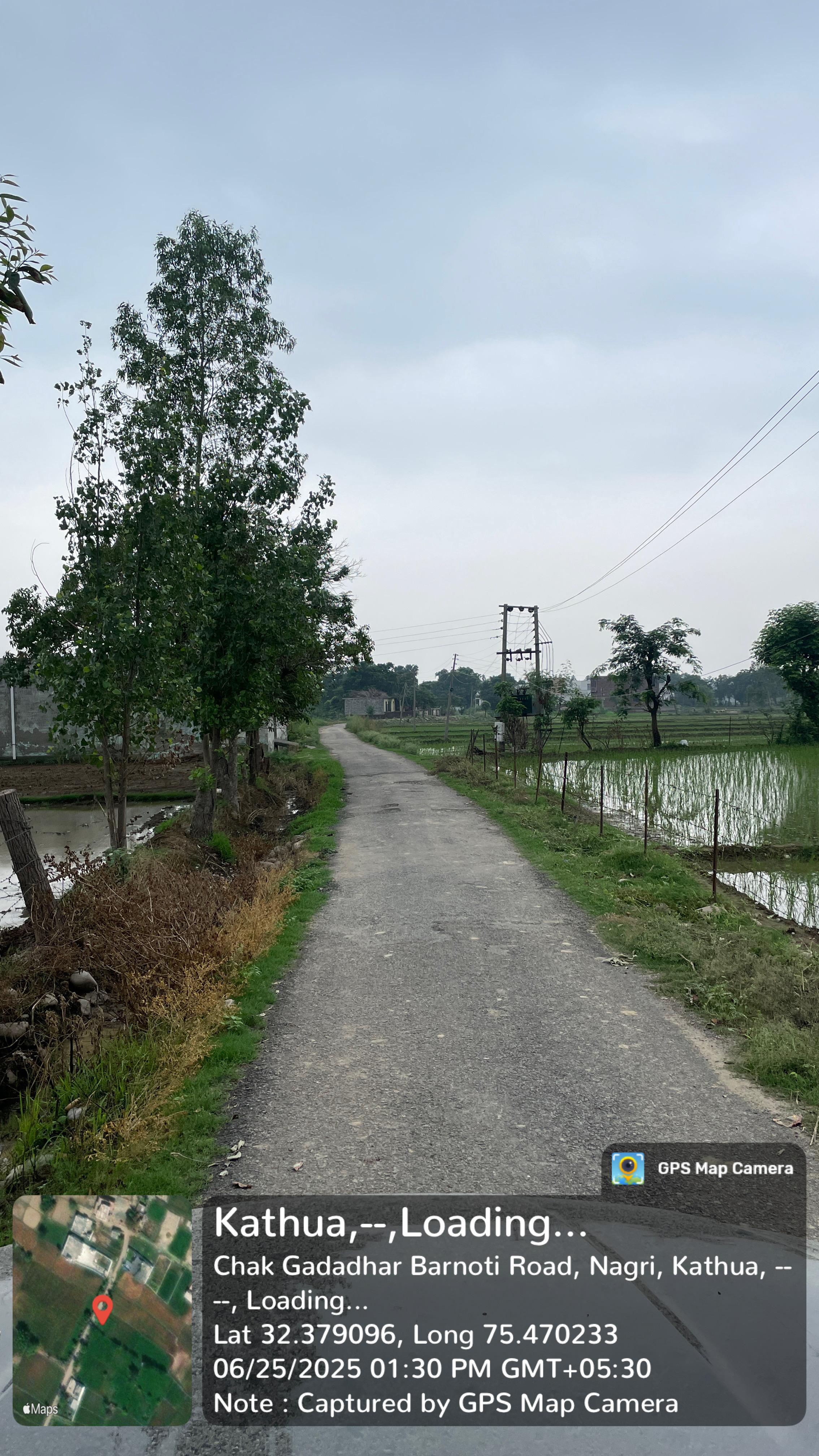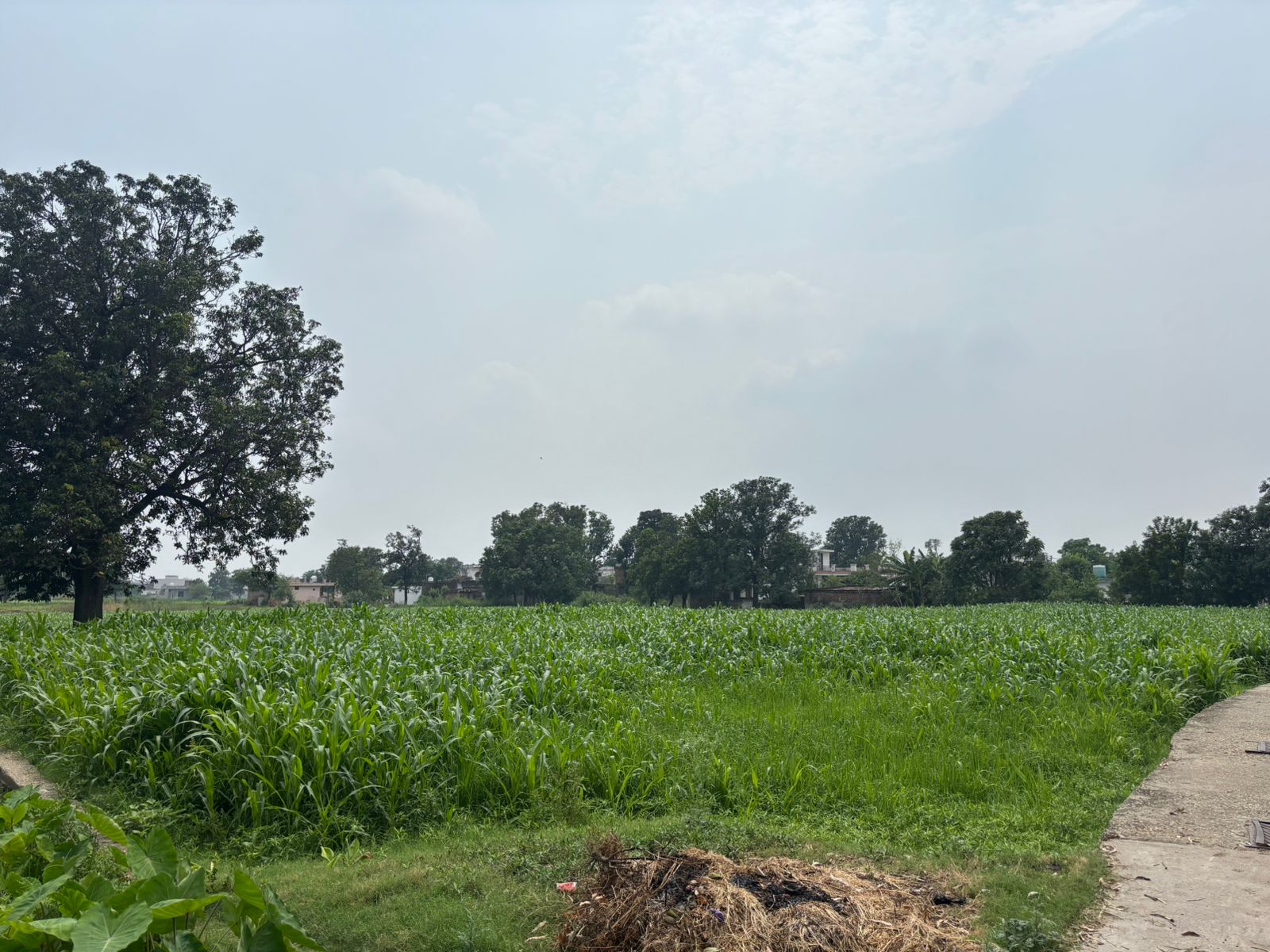Description
Introduction to Sherpur
Sherpur is a small village in the Kathua tehsil of Kathua district, Jammu & Kashmir (UT). Situated about 6 kilometers from Kathua town, the district headquarters, Sherpur represents a close-knit rural settlement with agricultural traditions, a mix of social communities, and a developing lifestyle. Despite its small population, the village is marked by its high literacy rate and proximity to urban amenities in Kathua, making it a unique blend of rural charm and semi-urban influence.
Population and Urbanization
As per the 2011 Census, Sherpur has a total population of 388 individuals residing in 104 households. Of this, 94 are males and 80 are females, with a sex ratio of 851 females per 1,000 males. Children in the age group of 0–6 years make up around 15% of the population, showing a young demographic base. Urbanization has not strongly penetrated Sherpur itself, but the village benefits from being close to Kathua town, where residents can access markets, healthcare, and education. Unlike larger villages, Sherpur remains predominantly rural and retains a traditional lifestyle, though modern services are gradually becoming accessible.
Cultural Heritage and Social Composition
Sherpur’s social fabric is diverse, with residents belonging to Scheduled Castes (SC ~21%) and Scheduled Tribes (ST ~8%) alongside other Hindu and Muslim families. The primary spoken language is Dogri, while Hindi and Punjabi are also understood, particularly among the educated youth. Cultural life in the village reflects the broader Dogra traditions of the Jammu region, where festivals like Lohri, Baisakhi, Diwali, and Eid are celebrated with collective enthusiasm. Villagers also take part in Ram Leela and local fairs in nearby Kathua town, reflecting their strong cultural ties.
Historical Background
While Sherpur itself does not have a widely documented individual history, it shares in the broader legacy of Kathua district. Kathua’s history traces back to Rajput migrations, with Dogra and Andotra clans shaping much of the district’s early cultural and political life. Over time, villages like Sherpur developed as agrarian settlements, linked closely to the fertile plains around the Ravi River basin. Oral traditions and family histories suggest that many residents of Sherpur are descendants of agriculturist families who settled here generations ago, cultivating the land and preserving their Dogra identity.
Village Lifestyle and Values
Life in Sherpur is rooted in community living and agricultural rhythms. Farming cycles, seasonal festivals, and shared responsibilities shape daily life. Families often engage in cooperative work during sowing and harvesting, while social ties are reinforced during weddings, religious gatherings, and cultural events. Despite its modest size, Sherpur reflects the resilience of rural Jammu communities—balancing tradition with aspirations for modern development. The younger generation’s higher literacy and access to Kathua’s resources point towards a future where Sherpur may diversify economically while maintaining its cultural heritage.
Principal Attractions
While Sherpur is primarily a residential and agricultural village, its charm lies in its rural landscape, open fields, and community lifestyle. Nearby Kathua town offers attractions such as Jasrota Fort, Ujh Barrage, Dream Park, and religious shrines like Mata Bala Sundri Temple and Sukrala Mata Temple. Pilgrimage sites and natural retreats in the wider Kathua district make Sherpur a convenient base for exploring both cultural and natural landmarks.
Economic Activities: Occupations and Livelihoods
Agriculture forms the backbone of Sherpur’s economy. Out of the working population (52 workers in 2011), around 18 are cultivators who farm their own land. Crops such as wheat, maize, rice, and seasonal vegetables are typically grown in Kathua’s fertile tracts, while dairy and small-scale livestock rearing supplement household income. Some residents are employed in Kathua town in small businesses, private jobs, and government services. However, the female workforce is notably limited, with very few women officially recorded as workers, reflecting traditional gender roles. With improved education and skill development, younger generations are beginning to explore opportunities beyond farming.
Infrastructure and Accessibility
Sherpur covers about 90 hectares (0.9 km²) of land. The village is connected to Kathua by local roads, with bus services available within 5–10 km, though the nearest railway station lies more than 10 km away. The village’s postal code is 184104. Being close to Kathua, residents often rely on the town for healthcare, education beyond the primary level, and other civic amenities. Electricity and drinking water have reached most households, though facilities like sanitation, modern healthcare centers, and advanced markets are accessed in Kathua.
Education and Literacy
One of the most striking features of Sherpur is its high literacy rate of 85.14%, well above the state average of around 67% in 2011. Male literacy is 91.25%, while female literacy is also significantly high at 77.94%. This achievement highlights the village’s emphasis on education despite its small size. Primary schools are available in nearby areas, while students pursue higher education in Kathua town. Educated youth are often proficient in English and Hindi, in addition to their native Dogri, and some pursue careers outside the village.
Gastronomy: Local Cuisine
Like most Dogra villages, Sherpur’s food culture is simple yet rich in flavor. Staples include rice, wheat-based breads, pulses, and seasonal vegetables, often complemented by dairy products like curd and ghee. Popular Dogra delicacies such as Rajma with rice, Ambal (sweet-sour pumpkin dish), Khatta meat, Kalaadi (hill cheese), and Madra are prepared during festivals and family gatherings. During winter, makki ki roti with sarson da saag is common, while sweets like meetha rice and patisa are enjoyed on celebratory occasions.
Sports and Recreational Activities
Sherpur’s youth actively engage in traditional rural sports. Cricket and volleyball are the most popular, often played in open fields. During festivals, games like kabaddi, gilli-danda, and wrestling bring the community together. Children frequently play informal games in courtyards, while Kathua town provides access to stadiums and organized sporting facilities. Recreational activities include participation in Ram Leela plays, folk dances, and gatherings at community spaces.
Health and Wellness Services
Sherpur itself lacks a major healthcare center, with only basic first-aid and local practitioners available. For advanced treatment, villagers depend on Kathua town, just 6 km away, which offers government hospitals, private clinics, and diagnostic facilities. Common health issues are related to seasonal changes, agriculture-related injuries, and lifestyle diseases. For animal healthcare, veterinary services in Kathua support the village’s dairy and livestock needs. Improving sanitation, clean drinking water, and preventive healthcare remain key priorities.
Best Time to Visit
The best time to visit Sherpur is between October and March, when the weather is pleasant, with cool winters that bring clarity to the surrounding landscape. This period also coincides with major festivals like Diwali, Dussehra, Lohri, and Baisakhi, allowing visitors to experience the cultural vibrancy of the region. Summers can be hot and humid, while the monsoon months (July–September) often bring heavy rains, which nourish crops but may affect travel.
Flora and Fauna
Sherpur and its surrounding areas are home to fertile agricultural fields, orchards, and patches of forested land. Common flora includes mustard fields, wheat crops, maize, and seasonal vegetables, alongside native trees like mango, peepal, and neem. The fauna is typical of rural Jammu: peacocks, parakeets, sparrows, jackals, monkeys, and cattle are commonly seen. During winter, migratory birds can sometimes be spotted near water bodies in Kathua, enriching the region’s biodiversity.
Photos
Location Map
Contact Information
| Address |
Sherpur, Hiranagar tehsil, Kathua, PINCODE:- 184142, Jammu and kashmir |
| Phone Number | |
| Website | https://villageinfo.in/jammu-&-kashmir/kathua/hiranagar/sherpur-pain.html |

